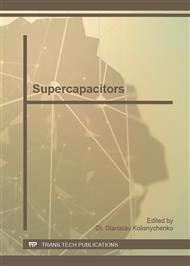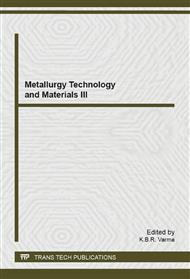p.53
p.58
p.63
p.67
p.72
p.76
p.80
p.84
p.88
Synthesis and Pseudocapacitve Properties of Tungsten Oxide Nanorods
Abstract:
Tungsten oxide (WO3) nanorods were fabricated and evaluated as negative electrode materials for supercapacitors. The influence of the concentration of sodium chloride and pH value of the synthesis solution were investigated. The pH value of solution and sodium chloride play important roles in the formation of uniform dispersed nanorods of WO3. Cyclic voltammetry and chronopotentiometry results show that nanorods WO3 film exhibit advanced pseudocapacitive performance over a negative potential range of − 0.6 V to 0.2 V vs. SCE in 1M H2SO4 with the high specific capacitance of 114 F g-1, compared to that of the bulk WO3 electrode materials.
Info:
Periodical:
Pages:
72-75
Citation:
Online since:
June 2014
Authors:
Price:
Сopyright:
© 2014 Trans Tech Publications Ltd. All Rights Reserved
Share:
Citation:



